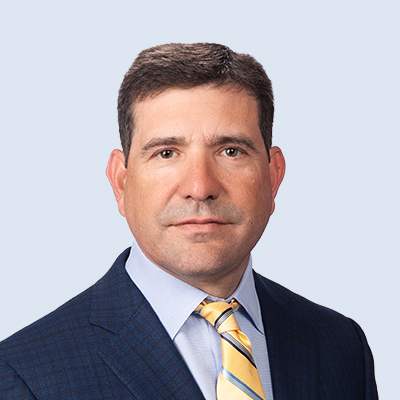Craig Ackerman: We’re kind of getting beyond what I’ll call the boom-bust of COVID-19 and moving back to more of a predictable operating environment that we saw prior to COVID-19.
Announcer: It’s time for another episode of the Alexander Group Revenue Growth Model Podcast. Welcome and enjoy.
Mike White: Hi, I’m Mike White, the principal with the Alexander Group, and joined by my colleague Craig Ackerman. Craig and I co-lead our healthcare practice within the Alexander Group. Today, we’re here to talk about how the healthcare industry is getting back to normal in 2023 and beyond.
Craig, as we know, based on some of our research, procedures volumes in the US are projected to get back to pre-pandemic levels next year. We had hoped to see that in 2022, based on some of our research, where volumes were anticipated to get near or above 100% of pre-pandemic levels in the fourth quarter of 2022. As we know, volumes didn’t get as far along as we were originally projected, but providers reported that they did get up to 98% of pre-pandemic levels in Q4, 2022. What they’re projecting for Q1 and Q2 of 2023 is that they get back up to 100% of pre-pandemic levels or above. So, I’m curious, your take Craig, on what impact that has on the overall healthcare market.
Craig Ackerman: As far as the impact, it’s been interesting – we’ve overestimated the return to normal coming back from COVID-19. We’ve been a little bit more optimistic than what’s actually happening. We do expect 2023 to be a year where we get back to normal. If you look at 2022, most people expect it to be the year we get back to normal. Faced with Omicron earlier in the year, folks expected procedures to return in a major way in spring and summer. We did get a little bit of a bounce back, but then summer procedure and patient volume fell off again, largely due to what I’ll term the “great vacation” – people took vacations this summer. We’re seeing things normalize in the fall, getting closer to pre-COVID-19 levels, but we are facing headwinds as an industry. So a couple of the headwinds: one is providers are facing throughput challenges. We’ve all heard about the nursing shortage – it’s been here for a while, even before COVID-19. But it’s been exacerbated by the pandemic – we can’t find enough staff to actually run healthcare facilities at capacity or even close to capacity at this juncture. We’re also seeing supply chain challenges – getting products is getting easier, but we’re still seeing challenges with providers getting the products they need for the procedures and to keep healthcare facilities running correctly. Also, because of economic headwinds, we’re starting to see what I’ll call patient reluctance in the form of patients being able to afford their procedures. So, either being able to pay their co-pays or afford their deductibles. We have a number of factors – we expect the nursing shortage to get better in 2023. We also expect the supply chain issues to get better in 2023. We still have a little bit of economic headwinds and the popular pressure – you hear the “R-word” (recession) all the time. But overall, we’re getting beyond what I’ll call the “boom-bust” of COVID-19 and moving back to more of a predictable operating environment that we saw prior to the pandemic.
Mike White: In that more predictable operating environment. Craig, assuming we get back to the more predictable environment in 2023, but still facing some of the headwinds that you mentioned around potential recession, lasting inflation and other macroeconomic factors – what impact does that have in 2023 and beyond on ACS (ambulatory care settings) or outpatient procedures, telehealth, and other care settings outside of core acute or hospital settings?
Craig Ackerman: As far as care settings go, there has been a long-term journey towards pushing procedures and patient care outside of the hospital because it’s very, very expensive to deliver care in a hospital. So, what we saw with COVID is many procedures were authorized for outpatient care, they were previously on the inpatient-only list and were transferred to be eligible for outpatient care. Some of those procedures are still on the outpatient list, while others have been put back on the inpatient-only list. Our latest research shows a numerator-denominator problem when we talk about a shift from hospitals to other care settings. Really, what it is, is as procedures and patient volumes increase, we can’t just keep building more hospitals, so we have to find other care settings to deliver care. And that’s where you see outpatient facilities, telehealth and ASCs come into play. In the ASC environment, we’re basically seeing a return to the trend line where ASCs are growing, more procedures are being done in ASCs, but at a measured pace, the pace it’s been at for the last 20 years. Because if you look at ASCs, there’s been a lot of talk around, well, if the procedure isn’t being done in a hospital, it must be done elsewhere. But if you look at ASCs, you’ll see that their volumes are up slightly while hospital volumes are down slightly. But there’s not this huge shift that’s occurred, partially because you have to build more ASC capacity. There are about 5000 to 6000 Medicare-licensed ASCs, with an average of three Operating Room (OR) suites in each one, compared to the average hospital, of which there are about 4000 hospitals, on average, with about 44 OR suites. So just doing the math, if we’re looking at surgical procedures, we still have a ton of capacity in hospitals that can use their facilities either for inpatient or outpatient.
Craig Ackerman: Regarding telehealth, it exploded during the pandemic because we were on lockdowns, but it’s here to stay. But there are reimbursement question marks hanging over telehealth. It looks like for 2023, telehealth reimbursement will stay as is, and we’re hoping that at some point telehealth gets normalized. But the volumes of telehealth, like everything else, have dropped, they’re still significantly higher than pre-COVID, but they’re somewhere in the neighborhood of 10% (pre-COVID it was in the low single digits). So, there’s still a lot of growth there, but it’s dropped from the 80 or 90% it was at early on in the pandemic.
Mike White: Yeah, I understand that. And that’s great. I think if we were to translate this to what it means for a medtech executive, so if I’m an executive of a medtech company and I’m thinking about patient volumes getting back to normal, and thinking about the question around what the procedure shift to outpatient or ASCs will be over the next couple of years, what should I be thinking about here near-term related to my go-to-market model?
Craig Ackerman: Those who have strong supply chains are doing well compared to their peers and winning right now. And they’re going to pick up market share based on our latest research. But really, I think as you look out the next couple of years and things normalize, it’s about taking more of a customer success mindset for our customers, making sure that they have the product they need, making sure that their staff is trained on that product, making sure that you can provide services that when they do have staffing challenges, that you can help them through those challenges. We are moving from a very strong sales mindset to more of a customer success mindset, focusing on working closer with customers to help them achieve their goals, whether that be supporting procedures in patient or helping them transition procedures to an outpatient setting. And also, longer term, as we look at product roadmaps and such, we’re going to have to design more products that fit in the outpatient market because that’s where more of the care is going to be delivered.
Mike White: I appreciate that, Craig, and certainly a lot to think about here as we head into 2023 and the macro factors combined with what you have to deal with as a medtech company and your specific area of specialty. For more information on the Alexander Group’s latest research and more information about the Alexander Group, please visit agiinsightsexp.wpengine.com.
Learn More About the Healthcare Practice:
How We Help
Insights
Leadership Events
Podcast Channel



